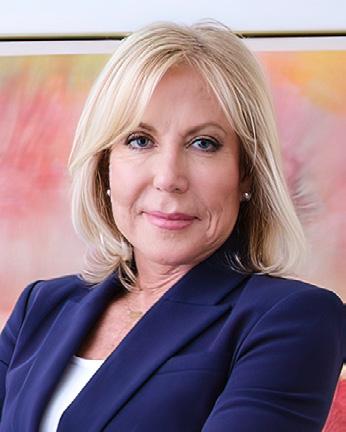Prevention and Lifestyle Care Beats Costly Medical Tests and Treatments
Every Time
By Erika Schwartz, MD
For decades we have been told our medical system is broken. We might have known this long before the COVID-19 pandemic started, but unfortunately, now we see its gaping holes so much more clearly.
COVID deaths were sadly multiplied by the inept medical care provided to too many hospitalized patients. For example, it took one year to realize that placing patients on their bellies saved lives by allowing more oxygen to move into their lungs. What kind of craziness is this? Has common sense been eradicated from medical education and the practice of medicine? Didn't we all know lungs expand better if you're on your belly? And what about blowing people's lungs out with respirators that didn't help?
I've listened to horror story after story from my patients and peers about the fearmongering that rules the healthcare system and about how many unnecessary tests and procedures we are subjected to on an ongoing basis. Recently, I heard a commercial on the radio from a cancer center telling
listeners in no uncertain terms that "cancer rates have gone up" since the beginning of COVID because patients no longer show up for routine screenings like they did before. Where is the data to back up that statement? Why is this ad even allowed to be broadcast? Is it because freedom of speech now means freedom to bully and scare the living daylights out of patients and open the door for the healthcare system to make up for all the money it lost during the pandemic? How horrific is this?
We spend money like water and never get to the root cause of the problems we are so glibly treating with drugs and procedures and testing. We don't really help patients; we only make more money for the broken system.
The fact that we have the most expensive healthcare globally, but our outcomes are not so great makes one wonder where we have gone wrong? The US spends at least 18% of its GDP ($3.35 trillion) on health expenditures. If costs continue to rise, by 2050, Medicare and Medicaid alone will account for 20% of the GDP. And still all projections point to continued rises in chronic disease.
Every patient I speak to tells me how afraid they are to go to the hospital. There is no such thing as physical examinations
or history-taking anymore. Decades have proven these diagnostic tools to work, yet now we have replaced them with an obligatory CT scan and 20 test tubes of blood. Why wouldn't people be afraid to go to hospitals?
These tests, medications, and even surgeries are the last things you need unless you get run over by a bus, have an internal catastrophe, or are in some kind of other accident. We don't talk about the root cause of our health problems because we will eliminate trillions of dollars overnight from healthcare expenditures if we start there. We say we talk about prevention, but we don't. Many doctors advertise that they specialize in prevention, yet it's often lip service. There is no training in medical school on lifestyle and prevention. It's only still considered voodoo by conventional medical training. Most medical students and physicians do not receive adequate training in even the basics of lifestyle medicine, such as nutrition, sleep, stress management and physical activity.
But the truth is simple. We can easily help make our patients' lives better. Here's how our patients are doing damage to their health:
• Patients frequently drink alcohol.
• Patients don't hydrate with water and wait until dehydration sends them to the emergency room.
• Patients eat junk food and don't realize that's why they are full of inflammation and become chronically ill.
• Patients are often sedentary and spend a great deal of time watching the small, medium, and large blue screens that destroy their vision and cognitive functions with impunity.
• Patients don't sleep even though we all know the importance of sleep in rejuvenation and healing.
• Patients don't understand the importance of meditating or breathing or just managing their stress, even though we know the less they react to stress, the less they will get sick and the better their immune system will work.
• Our patients don't ever stop. They just keep running themselves into the ground. And having more tests and procedures and taking more medication is only another way to destroy their lives and avoid preventing disease.
What is preventative and lifestyle care, and why does it matter?
Preventative and lifestyle care is healthcare that prevents disease, injury, or illness, rather than treating a condition that has already become catastrophic or chronic. The goal of preventative care is to help people stay healthy, to improve their healthspan. Often, evidence-based lifestyle therapeutic interventions, including a whole-food plant-dominant eating
pattern, regular physical activity, restorative sleep, stress management, avoidance of risky substances, and positive social connection, are primary modalities delivered by clinicians trained and certified.
Preventive care helps lower healthcare costs in America by preventing or treating diseases before they require medical care.
Lifestyle medicine intervention could help reverse chronic disease, leading to significant health care cost savings, according to a study conducted by the American College of Lifestyle Medicine published on 10/29/21 in the International Journal of Environmental Research and Public Health.
Why seek additional education?
As the established global leader for continuing medical education, the American Academy of Anti-Aging Medicine (A4M) is rooted in a forward-focused mission to redefine modern medicine through prevention, lifestyle, and whole-person care. Founded in 1992, the Academy offers graduate level education designed to produce the “complete practitioner” in all aspects of whole-person care. A4M has spent three decades equipping thousands of clinicians from across the globe with multifunctional tools to combat the growing burden of chronic disease and improve the human health span.
Use the COVID crisis to stop and look at your patient care. Don't think you know enough and do seek additional education and training in the areas that will help your patient prevent disease, change lifestyle habits, and reach healthy longevity and lead productive lives.
MARCH 8 & 9
Delve into the latest breakthroughs in health and longevity over two transformative days!
MONTH | Lifestyle Practices For Breast Wellness
Your small daily choices have a big impact on breast health. Here's how to take charge:
EAT a balanced diet rich in fruits, vegetables, and whole grains. Limit red meat, processed foods, and alcohol. Include healthy fats like avocados, olive oil, and natural nut butters.
MOVE your body daily. Two and a half hours of exercise weekly can reduce breast cancer risk by 10-25%.
SCREEN regularly with mammograms and wellness exams. Early detection is key to long-term health.
MAINTAIN a healthy weight and prioritize good sleep to reduce cancer risk factors.
EMPOWER yourself through awareness, consistent monitoring, and healthy lifestyle habits.
KNOW men can get breast cancer, too. Include them in awareness efforts and watch for signs like lumps and skin changes.
For more information, explore the National Breast Cancer Foundation's free educational resources, including their Healthy Living & Personal Risk Guide.
THE NEW AND NOTEWORTHY LONGEVITY
| Breakfast of Centenarians
Vegetables and eggs are the life-extending way to start the day according to longevity experts.
Why This Matters: Science confirms; eating a vegetable rich diet with unprocessed protein, antioxidants, probiotics, and healthy fats can lower your risk of chronic diseases and increase your lifespan.
What’s Next? Find ingredient inspiration for your ideal longevity breakfast here.
WELLBEING | Ready to “Fall Back”?
Daylight saving time ends on Sunday, November 3, at 2 AM local time. The earlier you start prepping your sleep routine, the better, according to sleep experts.
The Impact? While an extra hour of sleep may feel like a gift, time changes can disrupt circadian rhythms and have well-documented negative health effects. The end of daylight saving time has been linked to disturbed sleep patterns and increases in stroke risk, depression, and car accidents.
What’s Next? Start preparing now to ease the adjustment, experts advise. Learn how to improve sleep and energy levels during time transitions here
PREVENTION | Breast Cancer Spike in Younger Women
Early-onset breast cancer is on the rise, particularly in women under 50, despite declining overall breast cancer mortality.
Why Now? Key breast cancer risk factors are increasing among younger women: obesity rates, poor nutrition, exposure to environmental pollutants, and alcohol consumption.
What's Next? Read the full story for expert prevention strategies.




